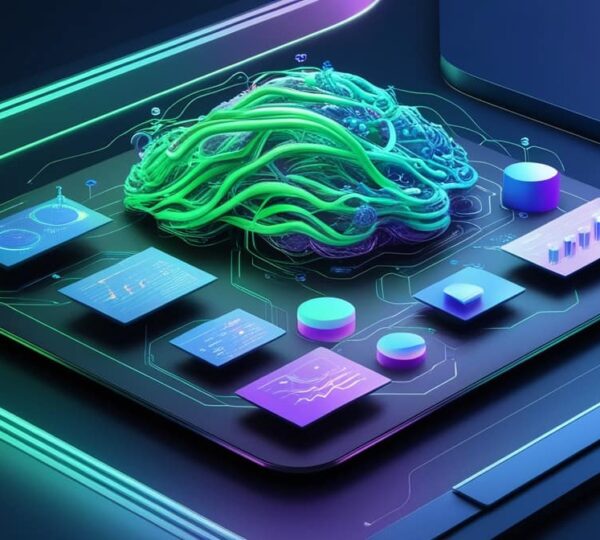Data Interpretation: Unlock the Power of Your Data

Data Interpretation: Unlock the Power of Your Data
Learn the importance of data interpretation in converting raw data into meaningful insights, driving informed decisions and strategies for success.
In today’s data-driven world, understanding and utilizing data is more important than ever. Whether you’re dealing with customer feedback, sales trends, or operational performance, data interpretation and analysis are crucial for informed decision-making. At Rapid Phone Center, we focus on offering reliable and effective services that leverage data insights to improve business outcomes. This guide explores the core concepts of data interpretation, analysis, and their applications, especially in the context of research.

Understanding Data Interpretation and Analysis
Data interpretation refers to the process of making sense of raw data by identifying patterns, trends, and insights. It involves assigning meaning to the information derived from data collection processes. On the other hand, data analysis is a systematic approach to reviewing, inspecting, and organizing data to draw meaningful conclusions. These two processes are intertwined and often used together to provide a complete picture of what the data represents. Sentiment analysis data helps businesses understand customer emotions by analyzing text, providing insights into opinions and improving decision-making.
When combined, data interpretation and analysis can transform raw numbers into actionable insights. For example, businesses use data to gauge customer satisfaction, predict trends, and enhance decision-making processes. At Rapid Phone Center, our approach to data analysis and interpretation ensures that we turn complex data sets into useful and comprehensible results for our clients.
The interpretation of data is essential in many fields, including business, healthcare, education, and technology. Without proper data interpretation, organizations risk making decisions based on incomplete or misunderstood information. Data interpretations provide clarity and help stakeholders understand the context behind the numbers.
For instance, in research data interpretation, scientists and researchers rely on their ability to interpret the data accurately. Misinterpretations can lead to false conclusions, skewed results, and ineffective strategies. Hence, precise interpretation of research data is crucial to ensuring valid and reliable outcomes. Data mining and statistical analysis extract valuable patterns and trends from large datasets, driving informed decisions and enhancing business strategies.

The Process of Data Interpretation
Data interpretation involves several key steps that help ensure the results are meaningful and accurate:
- Data Collection: Gathering the necessary data from reliable sources, ensuring accuracy and relevance to the research or business goals.
- Data Organization: Organizing raw data into structured formats that make analysis easier, such as tables, graphs, or charts.
- Data Analysis: Using statistical and computational techniques to examine the data and look for patterns, correlations, and trends.
- Interpretation: Assigning meaning to the analyzed data, which could involve comparing the results against hypotheses, industry benchmarks, or historical trends.
- Decision-Making: Making informed decisions based on the insights gained from interpreting the data, driving actions that align with business goals.
At Rapid Phone Center, we specialize in helping our clients navigate this complex process to ensure effective and insightful data interpretation and analysis. Data analysis techniques involve methods like regression, clustering, and visualization to uncover insights, trends, and patterns from complex datasets.
At Rapid Phone Center, we specialize in the interpretation and analysis of data, providing insightful solutions to help businesses make informed decisions. Our expert team uses advanced techniques and tools to analyze data, offering actionable insights that drive success and improve operational efficiency. Trust us for comprehensive data analysis and interpretation services.
Applications of Data Interpretation in Research
In the realm of research, data interpretation plays an especially critical role. Whether conducting market research, academic studies, or scientific experiments, the interpretation of research data provides a clearer understanding of the findings. Outbound sales involves proactive outreach to potential customers through calls, emails, or ads, driving new business opportunities and increasing revenue.

When researchers collect data, it often includes complex variables and large volumes of information. The interpretation of data in research aims to distill the essential elements from this information. Effective research data interpretation helps researchers identify significant patterns, relationships, and trends that may not be immediately apparent in raw numbers.
The combination of research data analysis and interpretation helps researchers draw valid conclusions and make predictions or recommendations based on the data. This interpretation allows for a deeper understanding of the study’s objectives and outcomes, ensuring that research findings are actionable. Lead generation focuses on identifying and attracting potential customers through targeted strategies, increasing sales opportunities and business growth.
At Rapid Phone Center, we excel in interpretation data services, transforming complex data into clear, actionable insights. Our skilled team uses advanced techniques to ensure accurate analysis and interpretation, helping businesses make informed decisions. With our data interpretation expertise, you can enhance performance, optimize strategies, and drive growth for your business.
Analysis and Interpretation of Data in Business
For businesses, data analysis and interpretation is vital for staying competitive and making data-driven decisions. Companies gather vast amounts of data about customer behavior, purchasing patterns, and product performance. The interpretation of the data allows businesses to identify market trends, customer needs, and areas for improvement. Omnichannel customer service delivers seamless support across multiple channels, enhancing customer experience and ensuring consistent communication.

In the business world, the analysis of data and interpretation can lead to critical insights that inform marketing strategies, product development, and customer service improvements. By relying on robust data interpretations, companies can make more informed decisions, streamline operations, and improve customer satisfaction.
At Rapid Phone Center, we understand the nuances of business data, and we use advanced data analysis techniques to help our clients interpret data accurately, ensuring that they can make decisions with confidence.
Rapid Phone Center offers expert data interpretation research services, providing businesses with clear insights and actionable recommendations. Our team utilizes advanced research techniques to analyze complex data, ensuring accurate interpretations that drive strategic decisions. With our data interpretation research, you can optimize your operations and make informed choices for growth. Data of Analysis Methods include techniques like statistical analysis, regression, and data mining to extract insights and inform decision-making processes.
The Role of Data Interpretation in Market Research
Market research is another area where data interpretation in research is crucial. Businesses often gather extensive data through surveys, focus groups, and market analysis. The research interpretation of data allows companies to translate these insights into meaningful conclusions that guide strategic planning.

Whether it’s analyzing customer feedback, evaluating brand awareness, or identifying new market opportunities, interpretation data research enables businesses to develop a deeper understanding of their target audience and market trends.
To support effective data interpretation and analysis, various tools and software are available to researchers and businesses alike. These tools assist with organizing, analyzing, and interpreting large sets of data, making the process more efficient and accurate.
Some popular tools include:
- Statistical Software: Programs like SPSS, SAS, and R are commonly used for complex statistical analysis and interpretation.
- Data Visualization Tools: Tools like Tableau, Power BI, and Google Data Studio help visualize trends and patterns, aiding in the interpretation of data.
- Spreadsheet Applications: Microsoft Excel and Google Sheets provide simple yet powerful ways to organize and analyze data.
By utilizing these tools, businesses and researchers can streamline their data analysis and interpretation processes, improving accuracy and reducing the risk of errors.
Challenges in Data Interpretation
While data interpretation offers valuable insights, it also presents several challenges. Some common obstacles include:

- Data Quality: Inaccurate or incomplete data can lead to misleading interpretations. It’s essential to ensure data quality before interpretation.
- Bias: The person interpreting the data may unintentionally introduce bias, which could skew the results.
- Complexity: Large data sets and complex variables can make interpretation challenging. Advanced analytical methods and expertise are often required to draw meaningful conclusions.
At Rapid Phone Center, we use best practices to mitigate these challenges, ensuring that the interpretation of the data is both accurate and actionable.
Data interpretation and analysis are integral to understanding and leveraging the full potential of data. Whether it’s for research or business decision-making, effective data interpretation leads to better insights, improved strategies, and more successful outcomes. At Rapid Phone Center, we specialize in helping clients interpret their data in meaningful ways, ensuring they make informed decisions based on solid evidence.
Through the proper analysis and interpretation of data, businesses can unlock valuable insights that drive growth, innovation, and success. By focusing on the interpretation of research data and the practical application of data analysis in research, we provide businesses with the tools they need to thrive in a competitive, data-driven environment.
If you’re ready to take your data interpretation to the next level, contact Rapid Phone Center today to learn more about how we can help you make data-driven decisions.

Frequently Asked Questions
Find answers to your data interpretation questions with our comprehensive Frequently Asked Questions at Rapid Phone Center.
What is data interpretation?
Data interpretation is the process of analyzing and making sense of collected data to identify patterns, trends, and insights that can inform decisions or conclusions.
Why is data interpretation important?
Data interpretation is crucial because it transforms raw data into meaningful insights that help businesses, researchers, and individuals make informed decisions. It provides context to the numbers, allowing for accurate conclusions and actionable strategies.
What is the difference between correlation and causation?
Correlation refers to a relationship or association between two variables, while causation indicates that one variable directly causes the change in another. It’s important not to confuse correlation with causation, as correlation does not imply causation.

What is the role of data analysis in data interpretation?
Data analysis helps identify patterns, correlations, and outliers in the data, which is the first step before drawing conclusions. Proper analysis ensures the interpretations made are accurate and grounded in data-driven evidence.
You might also find our article appealing:
Thanks, and Good Luck to You





